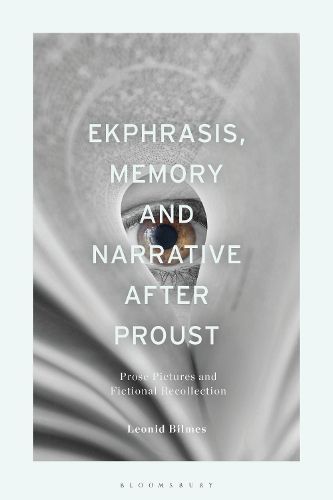Readings Newsletter
Become a Readings Member to make your shopping experience even easier.
Sign in or sign up for free!
You’re not far away from qualifying for FREE standard shipping within Australia
You’ve qualified for FREE standard shipping within Australia
The cart is loading…






This book explores the relationship between ekphrasis and memory in the novel. Drawing on A la recherche du temps perdu, Leonid Bilmes considers how Vladimir Nabokov, W. G. Sebald, Ben Lerner, Ali Smith and Lydia Davis have employed and reshaped Proust’s way of depicting the recollected past.
In Ada, Austerlitz, 10:04, How to Be Both and The End of the Story, memory images are variously transposed into intermedial descriptions that inform the narrator’s story, just as they serve to shape the reader’s own remembrance of each of these narratives. Ekphrasis in the novel after Proust, Bilmes argues, acts as a distinct site within the text where past and present, self and other, image and text, seeing and hearing, are ever on the brink of reconciliation.
The book surveys a wide field of critical inquiry, encompassing classical theorizations of ekphrasis, philosophical explorations of memory and visuality, as well as seminal studies of image-text relations by, among others, W. J. T. Mitchell, Jean-Luc Nancy and Liliane Louvel. Bilmes’s compelling dialogue with theory and literature evinces the underexplored bond between ekphrasis and memory in the contemporary novel.
$9.00 standard shipping within Australia
FREE standard shipping within Australia for orders over $100.00
Express & International shipping calculated at checkout
Stock availability can be subject to change without notice. We recommend calling the shop or contacting our online team to check availability of low stock items. Please see our Shopping Online page for more details.
This book explores the relationship between ekphrasis and memory in the novel. Drawing on A la recherche du temps perdu, Leonid Bilmes considers how Vladimir Nabokov, W. G. Sebald, Ben Lerner, Ali Smith and Lydia Davis have employed and reshaped Proust’s way of depicting the recollected past.
In Ada, Austerlitz, 10:04, How to Be Both and The End of the Story, memory images are variously transposed into intermedial descriptions that inform the narrator’s story, just as they serve to shape the reader’s own remembrance of each of these narratives. Ekphrasis in the novel after Proust, Bilmes argues, acts as a distinct site within the text where past and present, self and other, image and text, seeing and hearing, are ever on the brink of reconciliation.
The book surveys a wide field of critical inquiry, encompassing classical theorizations of ekphrasis, philosophical explorations of memory and visuality, as well as seminal studies of image-text relations by, among others, W. J. T. Mitchell, Jean-Luc Nancy and Liliane Louvel. Bilmes’s compelling dialogue with theory and literature evinces the underexplored bond between ekphrasis and memory in the contemporary novel.